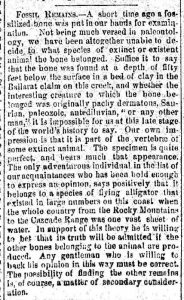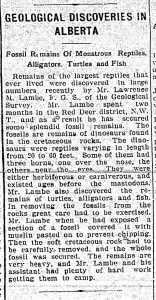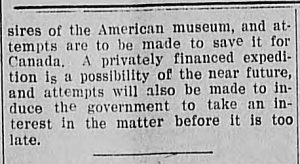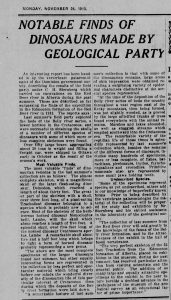CW: the book contains some outdated, racist, and derogatory language.
“You rest in the forest against a form-fitting log. Your eyes are narrow pools, your mood, dreamy lassitude. Your whole body is inert but receptive. The murmur of a distant waterfall comes alive; birds twinkle, twitter, chirp, and sing; the air you breathe has a taste on nose and palate of green humidity, with carbonated oxygens, and elusive perfumes; a deer drifts across a path of whiter light; and forest life, no longer afraid and furtive, is all about you” (Hazard, p. 65).
Part of the British Columbia Historical Books Collection, Joseph T. Hazard’s book Pacific Crest Trails from Alaska to Cape Horn is foremost a personal account of his journeys of mountaineering, hiking, fishing, and many more recreational adventures. Intermingled with these detailed personal tales of his experiences across the expansive highlands, Hazard shares local historic stories, practical information for visiting these locations, and expresses a passionate if optimistic view that the shared enjoyment of the Pacific Crest Trails can contribute to “social and national unity” between the “Three Americas” (p. 9). In support of a ‘new’ Pan-American vision, Hazard describes his wish for “many nations, cooperating in material things, living side by side in understanding friendship”, and encourages the “abandonment of the ‘bloody tenets’ of imperialism” (p. 10). Rooted in this hope for the future, Hazard’s book aims to promote international travel to visit the Pacific Crest Trails through quirky and sentimental personal accounts, and splendid descriptions of the beautiful natural scenery.
Available through UBC’s Open Collections, Hazard’s book includes many beautiful and unique photographs taken throughout his travels, some of which I have included in this blog post.

Lake Garibaldi
This book includes a few chapters on the beautiful Provincial Parks in British Columbia. Hazard shares stories of his treks through Mount Robson Provincial Park (ch. III) and Mount Garibaldi Provincial Park (ch. IV). This photo of Garibaldi Lake is from Chapter III, “Western Canada, A Hostess Neighbor” and can be found on page 32. (Un-fun fact of the day – it has been suggested that if the barrier of Garibaldi Lake gives way, the volume of water released could pose a serious threat to the town of Squamish)
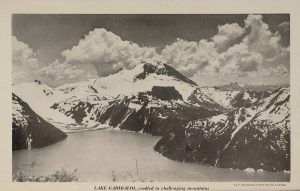
The Black Buttes
This beautiful photo of Black Buttes, a volcano on Mt. Baker, is from chapter “Cascade Crest Trail of Washington”. This image is from page 64.

Battling a Hanging Glacier
Next up, quite possibly my favourite photograph from the book – from chapter VII, “Up Glacier Park with Margaret and Mac”, this photograph shows a man scaling a glacier face. This photograph is from page 97.

The Sugar Pine
This photograph of a man standing in front of a massive tree with his arms extended to emphasize it’s girth. This tree was said to be 200 feet tall and 12 feet wide at the time of this photograph. This photo is from page 192. (Now it’s time for the fun-fact of the day – Sugar Pines are the tallest of the Pinus species! Regularly growing close to 200 feet)
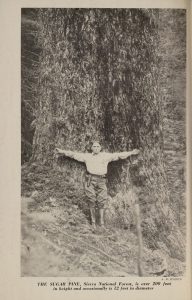
Camping in California’s Coastal Redwoods
From Chapter XIV, “California Tours Along the Beaches and Coastal Mountains”. Sun beams reach into a campsite through the canopy of massive redwood trees. This photograph is from page 225.

Climbing Party on a Cliff
This photograph of shows several people sitting on a cliff, looking down onto Tepoztlan, Mexico is from Chapter XVII, “Trails Lead South Through Mexico’s Highlands”. This photograph is from page 288.
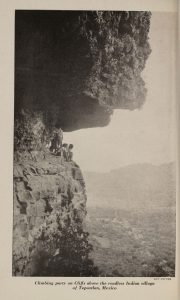
I hope you enjoyed these photographs from Joseph T. Hazard’s book.
Thank you for reading!








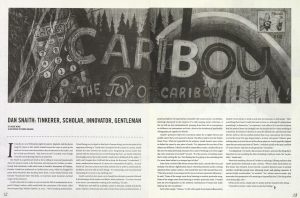



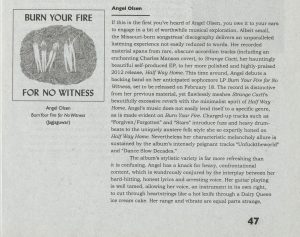
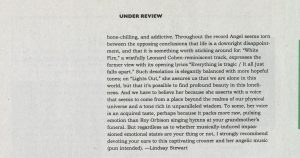
![[Two women and a man holding walking sticks on snow]](https://library-rbsc-2017.sites.olt.ubc.ca/files/2016/12/snow-website-360x300.jpg)

